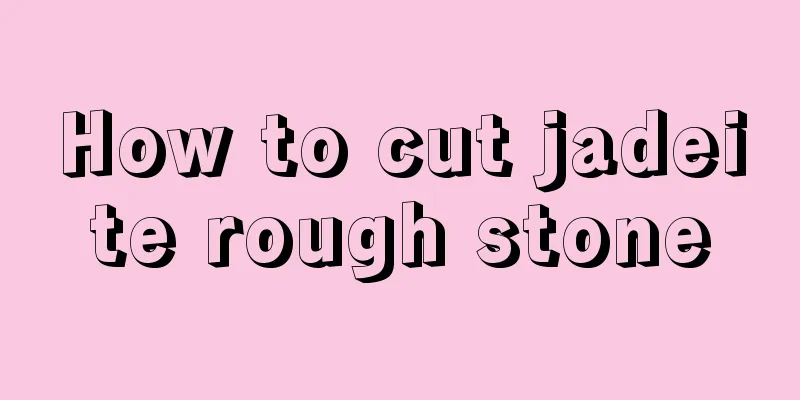Master these jade identification tips, and you can turn from a novice into an expert in seconds!

|
Common jade identification methods are nothing more than starting with the aspects of "quality, water, color, and workmanship". In fact, in addition to these major basic aspects, there are also some tips to help you identify jade when purchasing. 1. Knocking sound Gently hit the two bracelets together. Be careful to be gentle, gentle, and gentle (Important things must be said three times). If you hit too hard, there may be no consequences... Natural jade will make a clear "clang" sound. The impact sound of B-grade jadeite with obvious fillings will be dull and not so clear. 2. Reticulated Jade washed with strong acid generally has obvious pores and reticular structures. Although stress and weathering can produce obvious pores and reticular structures in natural jade, these natural pores can be filled with later zeolite, clay minerals, etc., and may also be filled with mineral powder or polishing powder during the cutting, grinding and polishing process. Products with these fillers are not B-grade products and are easy to identify. 3. Classification of Jadeite Grades On the premise that the jade pieces being appraised are natural jade, they are divided into grades and price categories according to the 5C2T standard: composition, color, clarity, cut, weight, transparency, and texture. When buying jadeite, you can pay attention to these aspects as a measure of whether the price is appropriate. 4. Jade identification certificate The appraisal certificate can be said to be the most convincing reassurance in the jade industry. Even if some jades are real, but the density of their internal structure does not meet the standards, it is impossible to issue a certificate. Therefore, the credibility of jade identification certificates is still very high. Generally, the appraisal certificate of natural jadeite (grade A) will be marked with "Jade", "Natural Jade", "Jade (grade A)", "Jade (natural)", etc., while grade B and C jadeite will all be marked with "Jade (processed)" or "Jade (optimized)". The appraisal certificates issued by various institutions are credible, but there are also unscrupulous businessmen who will issue forged appraisal certificates, or real certificates with fake jade. Therefore, when you buy jadeite, even if the merchant has issued an appraisal certificate, you must carefully distinguish the authenticity of the certificate, whether the certificate and the jade are consistent, etc., before you can buy it with confidence. fcgc66 fcgc99 |
<<: Using these three methods, you can identify the authenticity of jade yourself!
>>: It's obvious that the certificate is fake! The easiest way to identify jadeite
Recommend
The stunning sight of 46 million top-quality jade pendants, this is what we call peace and wealth!
It is said that bracelets, necklaces, and egg-sha...
A detailed explanation of all the practical knowledge about jade pendants, an indispensable practical guide for playing with jade!
There are many categories of jade finished produc...
The most direct way to identify jadeite when purchasing it - look, touch and weigh it
When buying jadeite, you must understand some bas...
Jade starts to turn darker and yellower after being worn for a long time? Your jade may have mutated!
Jade is loved for its transparent and emerald gre...
Share a piece of Moshisha jade window material, how is the finished carved product?
Today I’m going to share with you a piece of Mosh...
Four pieces of red mist jadeite rough stones, which are really beautiful after being carved
Red jadeite is a very distinctive color among jad...
How to Preliminarily Identify Real and Fake Jade
Many times, you will be caught off guard against ...
The meaning of wearing a tri-color jade bracelet
The tri-color jade bracelet looks very elegant wh...
Two jade bracelet cores, the process of carving the Thousand-Armed Guanyin
The process of making Guanyin with high-quality j...
What does a jade bracelet worth hundreds of millions look like? Rich and inhumane!
As the largest industry event in the first half o...
What are the popular terms related to jadeite? What do they all mean?
Many new buzzwords appear on the Internet every y...
Top quality snowflake cotton, rarely seen, enjoy the jade!
Snowflake cotton is the most unique of all jade c...
Jade appreciation often falls into seven misunderstandings, and insiders are confused
The traces of time left on jade cannot erase peop...
Share the process from cutting jadeite sheets to shipping finished products
Let me show you the process from a piece of cut m...
Steps of Jade Carving
Jade carving is the process of transforming a pie...









